According to many experts, the chronic prostatitis is an inflammatory disease that causes an infection with an infection, which is caused by the possible autoimmune disorders characterized by damage to the parenchyme and interstitial texture.The disease has been known since the 1850s, but today is badly understood and difficult to treat.Chronic bacterial (6 - 10%) and non-bacteria (80 - 90%) prostatitis, most and socially significant inflammatory diseases in men, significantly reduce life quality.The disease is mainly recorded in young and medium-senior people and often complex with the disorders of copy and generative functions (potential, infinity, etc.).The disease was recorded in men in 8-35% of the work between the ages of 20-40.
The cause of the bacterial prostatitis is a pyogenic flor of tongue through the urethroe or lymphogen and hematogenic routes.The ethology of chronic non-cannabis is unknown and the etiology of its pathogenesis.Mostly affect men over 50 years of age.
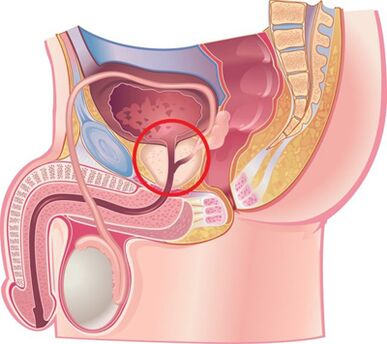
Reasons for the development of the disease
The chronic prostatitis is currently accepted as a polyethiological disease.There is an opinion that occurs as a result of the disease as a result of the prostate and then continues without the participation of the pathological process.It is facilitated by a number of infectious factors.
Infectious factors in the development of chronic prostatitis
In 90% of the work, pathogens are in the bag bag, resulting in a sharp or chronic prostatitis.There are cases of asymptomatic transportation.The protection of the disease is affected by the protection of the human body and the biological features of pathogen.The crossing of the chronic prostate is expected to occur due to the loss of tissue elasticity due to the production of fibrous tissue.
The following pathogens are found among the positive articles of chronic prostatitis:
- In 90% of the work, the disease reveals grams of grams like Escherichia Coli (Escherichia coli), Enterococcus Faecalis (fajis enterococcus), Pseudomonas Aerugginosa, Klebsiella SPP., Pseudomonas Aeruginosa, Enterobacter Aerogenes and Acinetobacter SPP.Gram-positive bacteria Enterorococci, streptococci and staphylococci are rare.
- The role of the coagulase-negative staphylocci, urines, chlamidia, trichomonas, gardnerella, anaerobic bacteria and the fungus of the sex was not explained.
Infection enters the prostate in several ways:
- The highly growing way is the most likely, as prostatitis and the frequent combination of urethritis.
- Hematogen prostatitis, infection chronic tonzillit, sinusitis, periodontitis, pneumonite, cholexitis and cholexes, ugly skin diseases, etc.
- Diagnostic and funisulitis, diagnostic and funisulite, diagnostit and therapeutic urological manipulation, including attractive chronic prostatitis, infection, transuretrals (Cathetization, urethra) are developed by urethra and stiffness with increased global infection with the infection and funisulite.
- Infection in the lymphen, the infection prostate, hemorrhoidal vessels penetrate the prostate, etc.

Inadequate factors in the development of chronic prostatitis
Chemical factors
According to experts, the leading role in the development of chronic prostatitis belongs to the intraprostatic reflux urine when the urine is doured from Urethra from iron, which causes prostate and seminal vesicles.
With the disease, vascular reactions are concerned, annoying and humor adjustment, ton of smooth muscle tissues and alphanation of alphanation1-Arrenoreceptors cause dynamic congestion and contribute to the development of new intraprostatic reflux.
The urine in the urine, with reflux, causes the development of "chemical inflammatory answer".
Hemodynamic disorders
Support chronic inflammation of the hemorrhable disorders in pelvic bodies and scrotum.A noisy lifestyle, for example, drivers, office workers, etc.Which is sexually attracted, sexual dismatherry, often develops in people working with hypothermias, mental and physical download.Right and spicy dishes, alcohol and smokers, etc.
Other factors
There are many other factors that support the chronic inflammatory process in the prostate.These include:
- Hormonal.
- Biochemical.
- The disruption of the immune response.
- Autoimmune mechanisms.
- Contagious and allergic processes.
- The properties of the prostate glands are caused by the difficulty of full drainage.
Often, it is not possible to create the causes of chronic prostatitis.
Classification of prostatitis
According to the classification proposed by the US National Health Institute in 1995, the prostatitis is divided into:
- Sharp (Category i).5 - 10%.
- Chronic Bacterial (II Category II).6 - 10%.
- Non-chronic non-oil inflammation (IIIA category).80 - 90%.
- Chronic non-metallic (category IIIB) or chronic pelvic pain syndrome.
- Chronic prostatitis was found by chance (IV Category IV).
Symptoms and symptoms of chronic prostatitis
The course of a chronic prostatitis is long, but not monotonous.Effective periods are monitored with the periods of relative calm, which occurred after complex anti-terrifying and antibacterial therapy.
The development of chronic bacterial prostatitis is often in pelvic and scrotal bodies (hemorrhoids, varicos, etc.
Patients with chronic prostatitis provide many complaints.They have been going to doctors for years, but are very rarely examined for prostate disease.There is no complaint of patients in about the quarter or the disease occurs with less clinical symptoms.
The complaints of patients with chronic prostatitis can be divided into several groups.
Uretic disorders related to the shrinking of the urethra:
- The difficulty first urine.
- Weak flow of urine.
- Intermediate or dribble urine.
- The feeling of incomplete discharge of the sac.
Symptoms causing irritation of nervous ends:
- Often urine.
- The desire to urinate is sharp and strong.
- Urine in small parts.
- Urine kidnapping in urine.
Pain syndrome:
- The intensity and character of pain are different.
- Localization of pain: low belly, perineum, rectum, groin and lower back, backward surface of the waist.
Disorders of sexual function:
- In the urethra during the pain and discharge in the rectum.
- Slow erection.
- The loss of orgasm.
- Premature ejaculation, etc.
From the nervous system: Neurotic disorders in the form of determining the attention of patients in health.
Symptoms and symptoms of non chronic prostatitis
In men, chronic pelvic pain (CFTB) comes with ordinary symptoms for chronic prostatitis, but in the 3rd part of the urine and there is no secret of prostate in the work of bacteria.The simulation can simulate a functional prostate that causes CTB, chronic nebacterial interstisal cystitis, rectum, spastic pelvic floor spastic mialgia and bad organic organism and its hemodynamics.
When the neuroveganegetative function is broken, the glaze innervation of the glorefront of Uretra's rapid and complete closure is marked.At the same time, urine continues to fall for a long time after urine.In such patients, research, instability and increased excitement, growing sweating and excitingness of heart activities, the changes in dermographism were discovered.
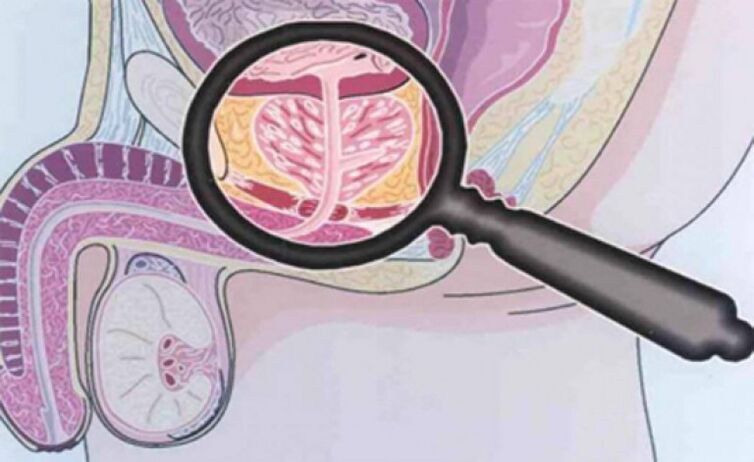
The aggravation of the disease
The long run of chronic prostatitis is complicated by the development of diseases of sexual and reproductive functions, vesikulitis and epipidimit, the hardening of the body.Organ sclerosis worsen the results of local microcirculations and urodynamics, as well as the results of surgical interventions.Fibrosis of peruretral tissues lead to the development of urinary disorders.
Diagnosis
Due to the many reasons for the development of chronic prostatitis, a number of diagnostic tests are used to diagnose all diagnostic tests to diagnose.The success of treatment depends on the correct determination of the causes of the disease.The diagnosis of chronic prostatitis is based on the following information:
- Classic Triadi of Symptoms.
- A complex of physical methods (digital rectal examination of the prostate).
- Laboratory methods set (definition of urines, culture and anti-cultivated medications of prostate secretions, urinary and blood overall analysis).
- To discover a smear's bacterioscopy of urethra, PCR and Serological Methods (for identification of Oriplesma and Klamidia).
- Urofluometry.
- Prostate biopsy.
- Set of instrumental methods (ultrasonic examination).
- Determination of the patient's immune status.
- Determination of a neurological situation.
- If the treatment is neutralized and complications are suspected, computer tomography and magnetic resonance imaging, blood culture, etc.
Palpation of the prostate gland
The palpation of prostate, which is of primary importance in the diagnosis of the disease, which is sharpened during the period of aggression and decreases during the inflammatory process.In chronic prostatitis, during the period of aggravation, the cloth is swollen and painful.
The organ sequence may be different: softening and hardening areas are palpable, withdrawal areas are determined.It is possible to evaluate the shape of cloth, seminal tuberculosis and the state of surrounding tissues.
The process of a transcrectal digital examination is combined with the collection of cloth secretions.Sometimes it is necessary to get the sector of each lobes separately.
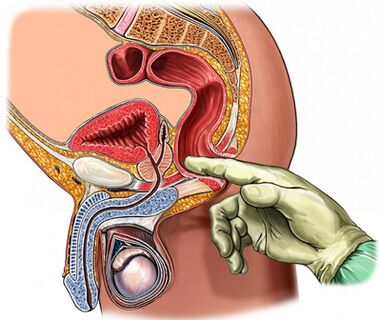
Analysis of 3 cup samples of urine and prostate secretion
The "gold standard" in a chronic prostatitis diagnosis is:
- To collect the first part of the urinator.
- Collection of the second part of the urine.
- To get cloth secretions through massage.
- The collection of the third part of the urine.
Next, the microscopic and bacteriological examination of the material is carried out.
For the prostate inflammation:
- Microbial number (CFU) exceeded 103rd/ ml (10)To 4For epidermal staphylococci, but hundreds and hundreds of accommodation should not be indifferent by a small number of germs.
- The presence of 10-15 leukocytes in the review area found by a microscopy is generally accepted for an inflammatory process.
The secret of the prostate and 3rd urine parts is subject to microscopic and bacteriological studies:
- In chronic bacterial prostatitis, the increase in the number of leukocytes in the mystery of the cloth and the third post-mines of the urine, the bacteria (mainly intestinal group) were released.
- There is an increase in the number of leukocytes in the mystery of the glory of the glory, not the market, but not microflora.
- With CTB, a large amount of white blood cells and microflora.
Normal indicator of the secrecy of prostate:
- Lokocytes with less than 10 in the field of appearance.
- Leciithine counts of grains a lot.
- There is no microflora.
In a chronic prostatitis in the mystery of the prostate, it is found:
- The number of leukocytes in the field of appearance is large, more than 10-15.
- Leciithin grains decreases.
- PH passed to the alkali side of the secretion.
- The content of the acid phosphathaza is reduced.
- The activity of the lysosis is growing.
It does not prove the negative consequences of the secrecy of the prostate once a inflammatory process.
The cost of the secret of the prostate remains the value of the test.Normally, a characteristic pattern occurs in the form of a fern sheet during crystallization.In case of violating the cumulative features of the prostatic secret, this example does not form what is happening in the Androgenic Hormonal Fund.
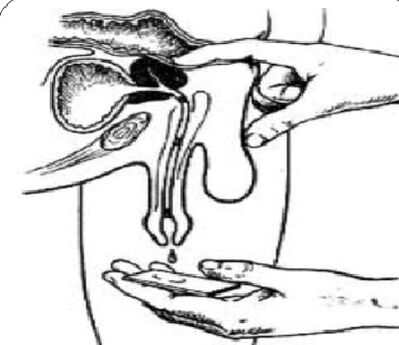
Ultrasonic examination
If the prostate disease is suspected, the cloth itself (transkrectal ultrasound), kidneys and bladder optimally, which allows you to determine.
- The volume and size of the gland.
- The presence of stones.
- Dimensions of seminal mesicles.
- The state of the bladder walls.
- The amount of the residual urine.
- Structures of the scrotum.
- Another pathological type.
Other prostate exam methods
- The state of urodynamics (research of urine flow) is easily determined using a study like Uroflowmetry.With the help of this study, it is possible to immediately detect the signs of the bladder outlet obstacles and conduct dynamic monitoring.
- A penciling biopsy is being suspected of formation of abscess, benigy hyperplasia and prostate cancer.
- X-ray and endoscopic examinations are being carried out to clarify the reasons for the development of infravesisicular congestion.
- In case of a long-term inflammatory process, it is recommended to fulfill urethroocistoscopy.
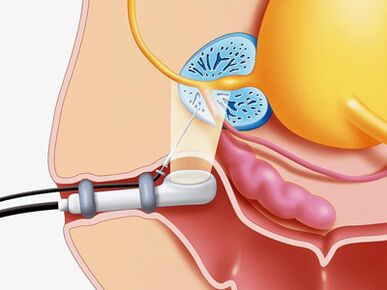
Differential diagnosis
Chronic prostatitis vesiculopofeostasis, autonomous prostatopathy, stagnant prostatitis, paleudiological diseases, pseudourological diseases, inflammatory diseases, longitudinal art, sexual dyspuncture, sexual dyspuncture, sexual dispute, sexual dysfunction.Hyperrophy of the neck, urethra, tuberculosis, prostate cancer and bladder, urolith, chronic epipidimit, inguinal hernia toughening.
Treatment of chronic prostatitis
The treatment of chronic prostatitis should begin with a change in the patient's lifestyle and nutrition.
Medications in the treatment of the disease are used at the same time, which affects different links of pathogenesis.
The main directions of therapy:
- Eliminating reason microorganisms.
- AntiinFlamator therapy.
- Normalization of blood circulation in prostate and pelvic bodies.
- Normalization of adequate drainage of prostatic acinus.
- Normalization of hormonal profile.
- Prevention of organ sclerosis.
For the treatment of chronic prostatitis, the drugs of the following groups are used:
- Antibacterial.
- Anticholinarjik.
- Vasodilators.
- Alpha1-Bren -blocking.
- Inhibitors 5 alpha dedicated.
- Cytokine inhibitors.
- Non-meters antiinflamational.
- Angioprotants.
- Immunomodulators.
- Preparations that affect the urinary exchange.
Antibiotics in the treatment of bacterial chronic prostatitis
Antibacterial therapy should be carried out taking into account the sensitivity of the detected microorganisms to antibiotics.In the case of pathogen, empirical antimicrobial treatment is used.
The choice medications are the fluoroquinolonosis of the II generation.The tissues of the diaper with ordinary use methods, operate against a large gram group, but also operate with ur references and Kllamidia.In the absence of antimicrobial treatment, it must be accepted:
- Microflora Polyurezancy,
- Short (less than 4 weeks) treatment courses,
- Antibiotic and its dose of the wrong choice,
- Changes in the type of pathogen,
- The presence of bacteria living in the prostate channels is covered with a protective extremist membrane.
The duration of treatment should be with at least 4 weeks with mandatory subsequent bacteriological controls.Protection in part 3 of the urine and the secret of bacterial prostate is more than 103rdFor a period of 2 to 4 weeks, the correspondence of reservoirs is determined.
Cytokin inhibitors in the treatment of chronic prostatitis
Cytokines are glycoproteins secreted by immunity and other cells in anti-inflammatory reaction and immune reaction.They are actively involved in the development of a chronic inflammatory process.
Nonsteroid drugs
Non-valuable impact of non-anti-inflammatory drugs, reduces pain and fever.They are widely used in the form of tablets and silkors in the treatment of chronic prostatitis.The most effective, the rectal way of access.
Immunotherapy
In addition to the treatment of bacterial chronic prostatitis, in addition to antibiotics and anti-inflammatory drugs, immunomodulating substances are used.The most effective ones are the rectal way of their entrance.Immunomodulator is widely used, which increases the functional activity of fagosites that help pathogens to eliminate a more effective removal.
Alpha-blockers in the treatment of chronic prostatitis
Alpha-1 AdrenerGic shoes normalize the tone of the smooth muscles of the urethra, seed bubbles and prostate capsules that are very effective in the treatment of the disease.Alpha-1 Adrenergic shoes are used in patients with urinary disorder declared in the absence of an active inflammatory process.
The term of treatment with CTB is up to 1 to 6 months.
5A reorganization inhibitor in the treatment of abacterial prostatitis and KTBB
Testosterone, Testosterone 5A-DihydotrotestosteTosteTostero, which is 5 times more than the testosterone in prostate cells, which is becoming a prostatic form that causes the elderly to increase the body due to its epithel and stromal components.
During the 3 months, 5A edited an innibrarian, 6-month-old gland, decision, painting, pain, reducing the volume of pain, and the body's tension decrease.
The role of anti -Sclerotic drugs in the treatment of chronic prostatitis
The prostate gland is developing fibrosis, which manifests itself with long inflammation, microsirculation and urodynamics disorders.Anti -Sclerotic medications are used to prevent the fibrication process.
Other drugs used in the treatment of chronic prostatitis
Along with the above drugs, illness is used to treat:
- Antihistamines.
- Vasodilators and angioprotants.
- Immunosuppressors.
- Preparations that affect the speed exchange and salt exchange of lemonic acid.
Vegetable products
In the treatment of prostatitis, the use of candles with biologically active peptides isolated from the prostate gland of medicine.
Under the influence of the drug,:
- Stimulation of metabolic processes in the tissues of the gland.
- To improve microsirculation.
- Reduces the edema, leukocyte infiltration, stagnation and pain.
- Thrombosis prevention in the venues of the prostate gland.
- Increases activity of Acinus's seconds.
- Improve sexual function (increased libido, erectile function restoration and normalization of spermatogenesis).
Finger massage of the prostate gland
A number of researchers should be used in chronic prostatitis, taking into account known reverse instructions.
Physiotherapy
The effectiveness of physiotherapy procedures in the treatment of prostatitis is not proven, today the mechanism of action has not been scientifically, negative reactions have not been studied.
Prevention of chronic prostatitis
You must know by starting the development of chronic prostatitis:
- The risk of the disease is growing over the years.
- Representatives of the Negroid race are more prone to the disease.
- The disease is not ruled out that a family prone.
Those who are prone to the development of chronic prostatitis should be more careful in their health.
Tips to prevent disease:
- Take enough liquid.Often helps the urine microflora pull outside the urethra.
- Prevents diarrhea and constipation.
- Stick to a balanced diet.Avoid foods rich in carbohydrates and saturated oils causing inconvenience.
- You must limit the consumption of items that irritate the Uretra as much irritating: hot and spicy foods, smoked foods, sauces and spices, coffee and alcohol.
- Stop smoking.Nicotine has a negative impact on the condition of the vascular walls.
- Don't be too cold.
- Don't waste your sac.
- Play active lifestyle and sports.Take exercises to strengthen pelvic muscles that eliminate venous blood stagnation, which in turn providing normal prostate function.
- You have a permanent sex life.Avoid refusing for a long time.Gland should be cleaned in time from secretions.
- Monogam stay loyal to a relationship.Sex, unlimited sex, increases the likelihood of sexually transmitted diseases.
- If you have complaints from the genitourination organs, please contact an urologist immediately.
































